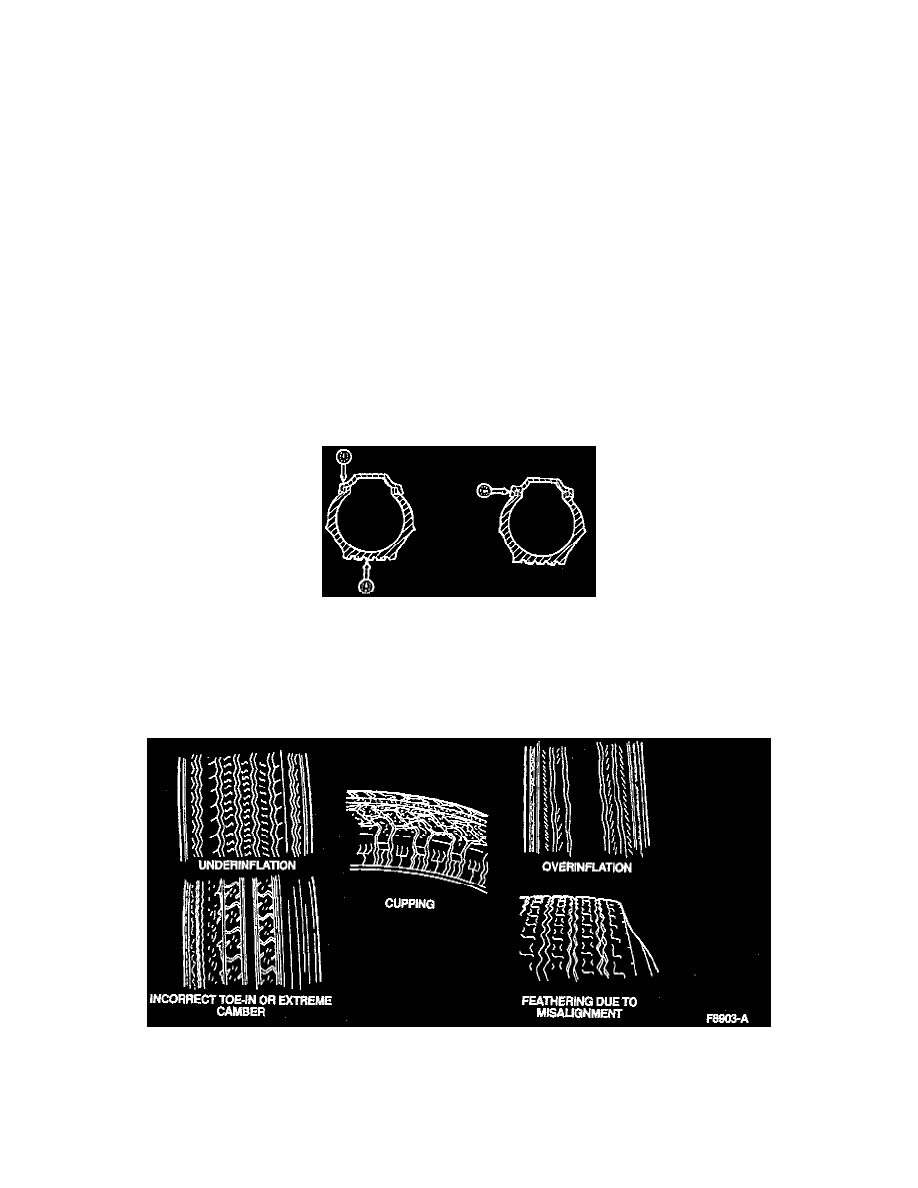Ranger 4WD V6-3.0L VIN U (1997)

4. If the runout is reduced to acceptable guidelines (not to exceed 1.27 mm [0.050 inch]), the tire is ready to be put back into service. If the runout is
still excessive, one of the following steps must be performed:
^
If the high spot is within 100 mm (4 inches) of the first high spot on the wheel, the wheel may be out of tolerance. Check the wheel for runout.
^
If the high spot is within 100 mm (4 inches) of the first high spot on the tire, and is still outside of guidelines, replace the tire.
^
If the high spot is not within 100 mm (4 inches) of either original high spot of the tire and rim, then draw an arrow from the second high spot
to the first high spot (in the shortest direction) and rotate the tire on the rim 90 degrees in that direction. This will normally reduce the runout
to an acceptable level.
In the majority of cases, the first 180-degree turn of the tire will either fix the problem or indicate which item to replace.
Runout
DESCRIPTION
Excessive radial and lateral runout of a wheel and tire assembly can cause roughness, vibration, wheel tramp, tire wear, and steering wheel tremor.
Before checking runout, and to avoid false readings caused by temporary flat spots in the tires, check runout only after the vehicle has been driven far
enough to warm the tires.
Measure the extent of the runout with Rotunda Radial Runout Gauge. All measurements are made on the vehicle with the tires inflated to
recommended inflation pressures and with the front wheel bearings adjusted to specifications.
TIRE RUNOUT
Using Rotunda Radial Runout Gauge 007-0056A, measure radial runout of the tire at the center and outside ribs of the tread face. Mark the high
points of radial runout for future reference. On tires, radial runout should not exceed 1.02 mm (0.040 inch).
WHEEL RUNOUT
Measure radial and lateral wheel runout at the positions shown in the illustration. Runout should not exceed 1.14 mm (0.045 inch) in either position.
Wheel and Tire Checking
1. Inspect tires for wear. The original equipment tires have built-in tread wear indicators to show when tires need replacement. Abnormal or
excessive wear can be caused by incorrect wheel alignment, wheel/tire imbalance or improper tire pressure.
2. Inspect to determine if the following conditions apply:
^
Incorrect mounting
^
Misalignment
^
Loose wheel bearings
^
Bent wheels
^
Cupping or scalloping of tires from imbalance
